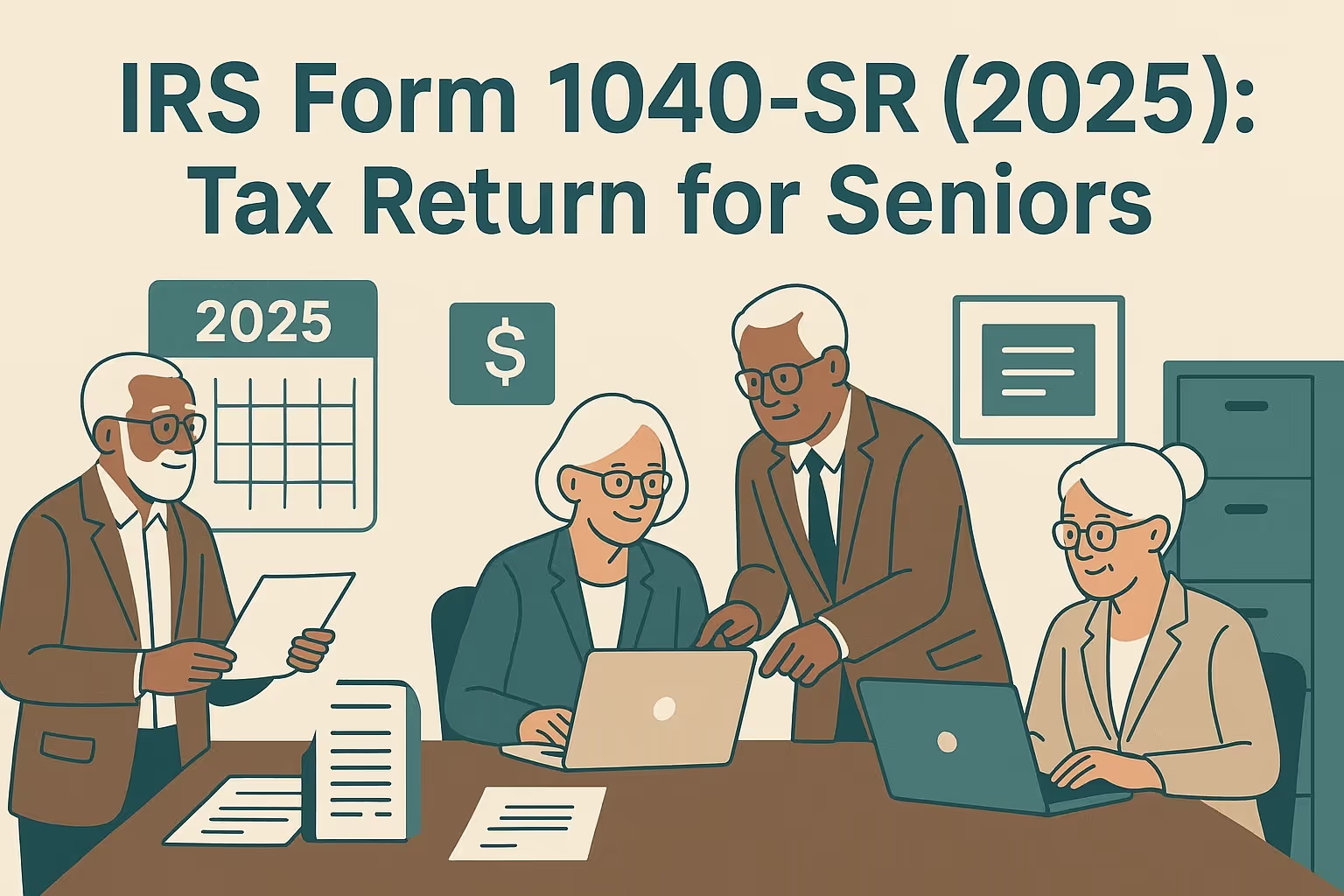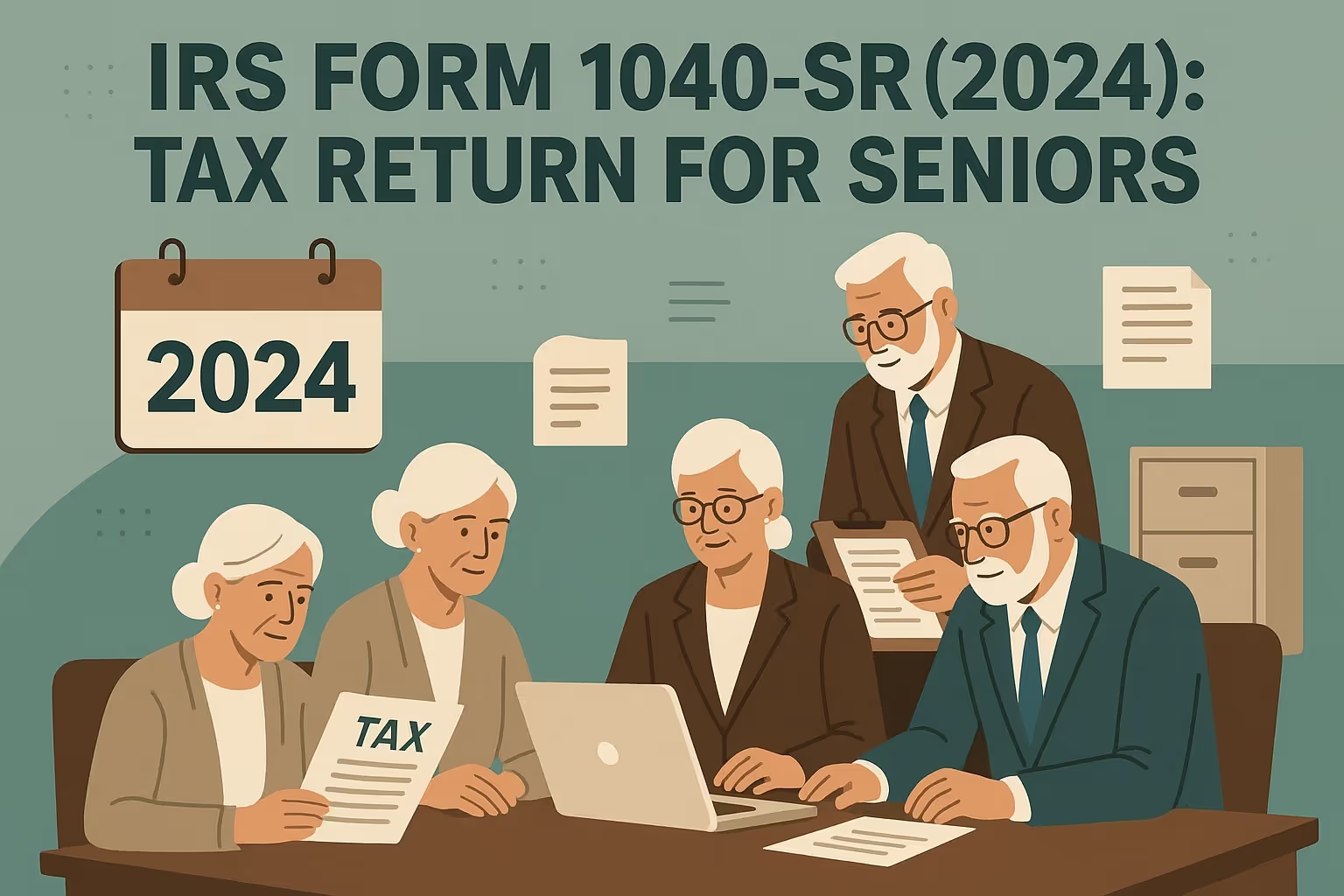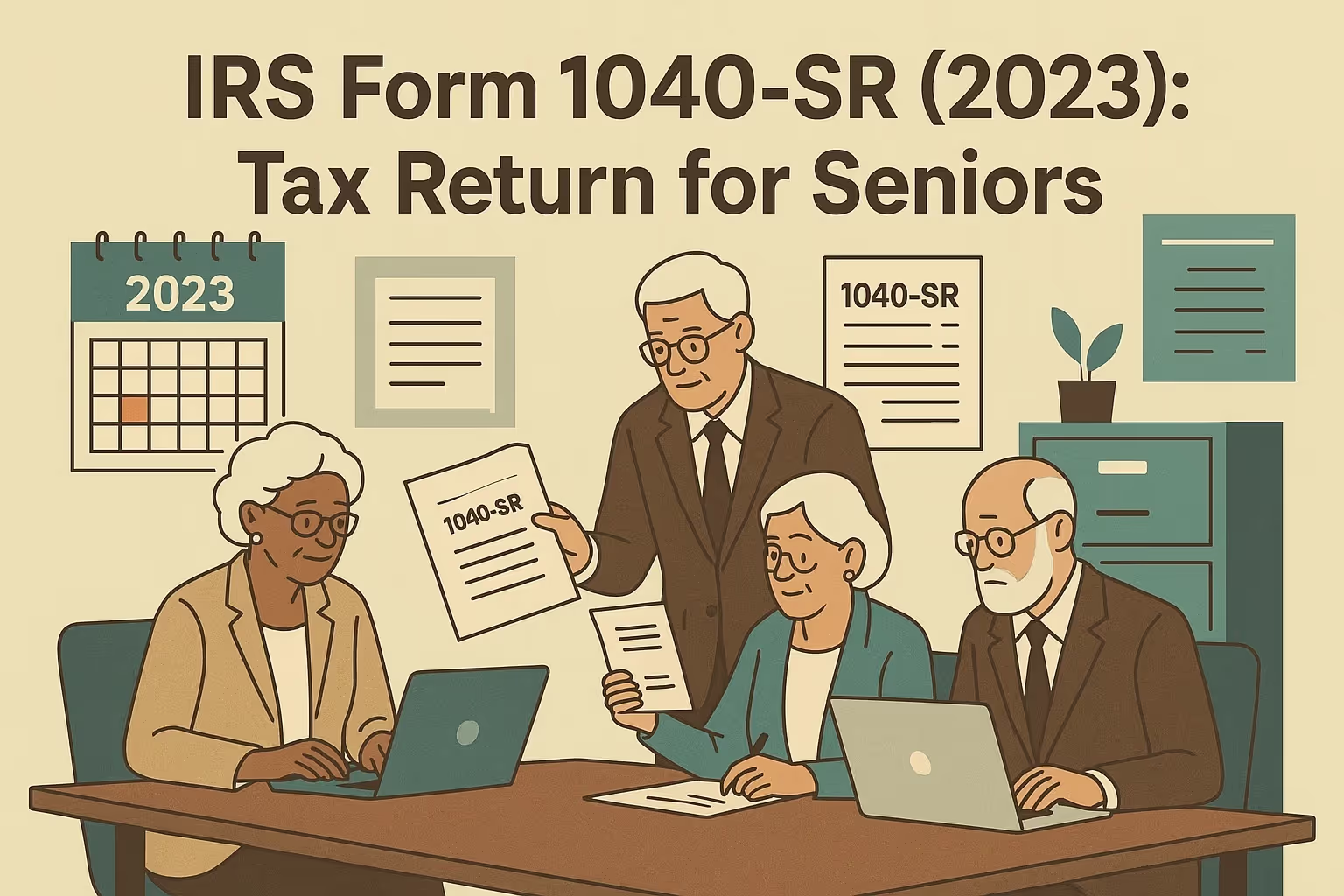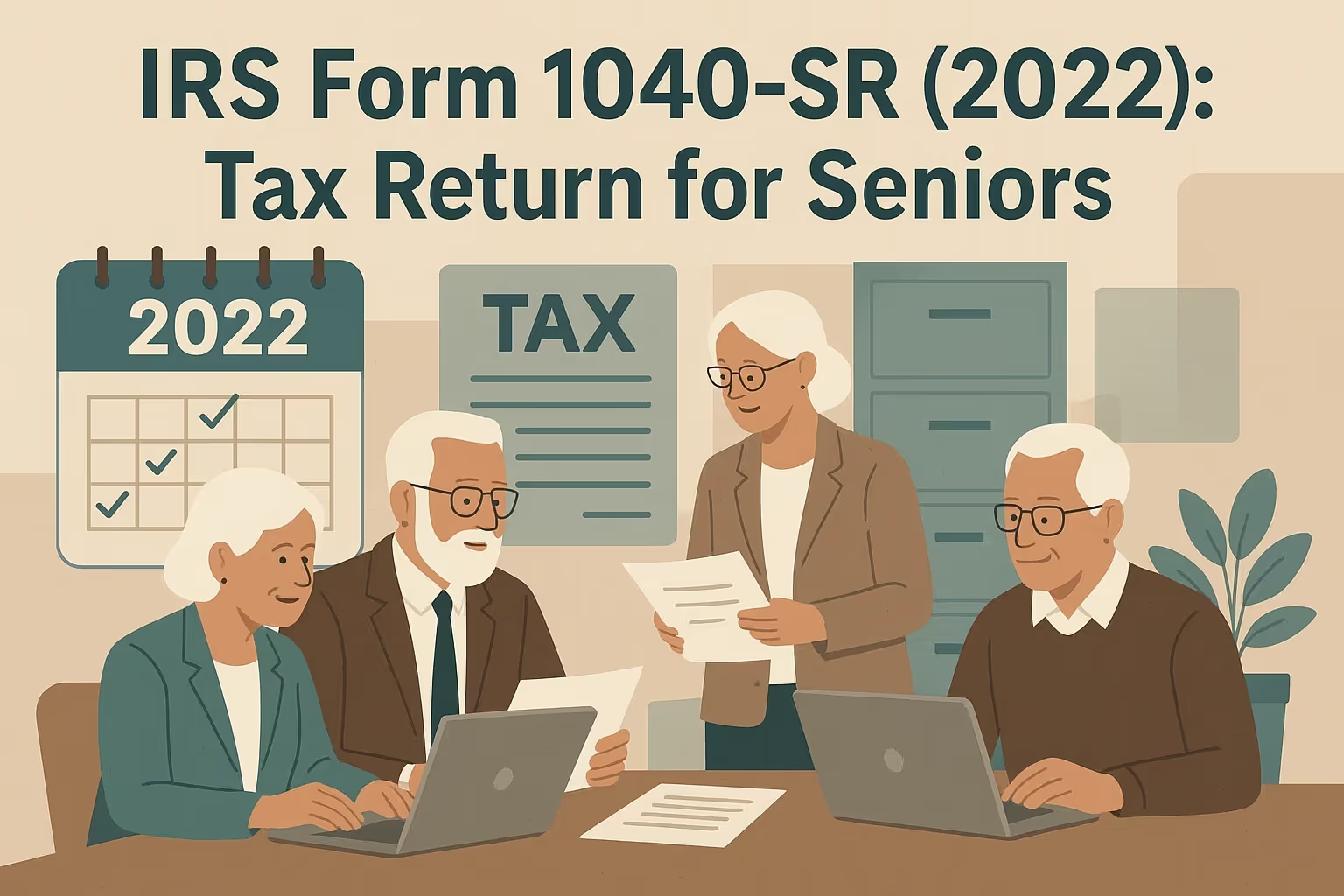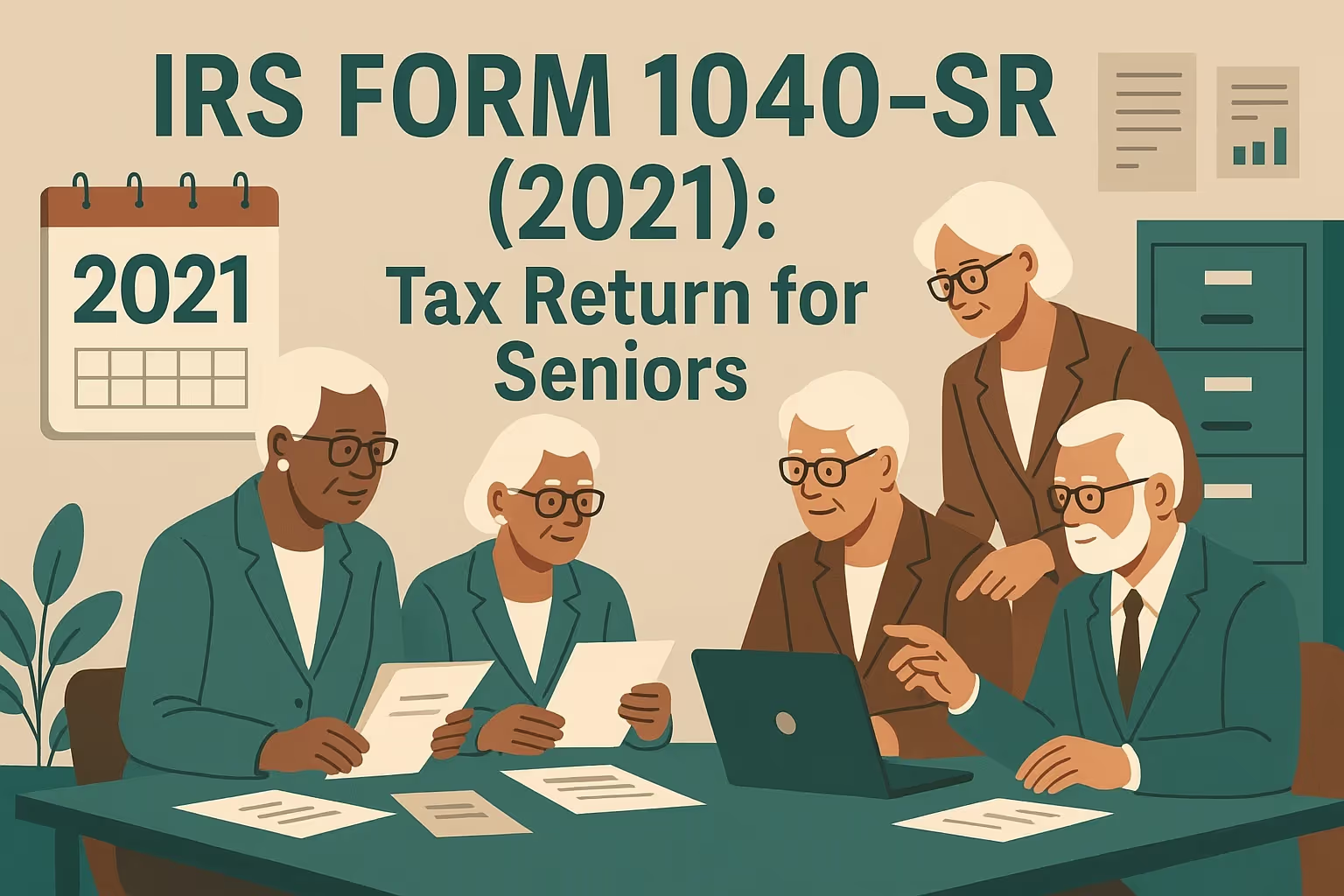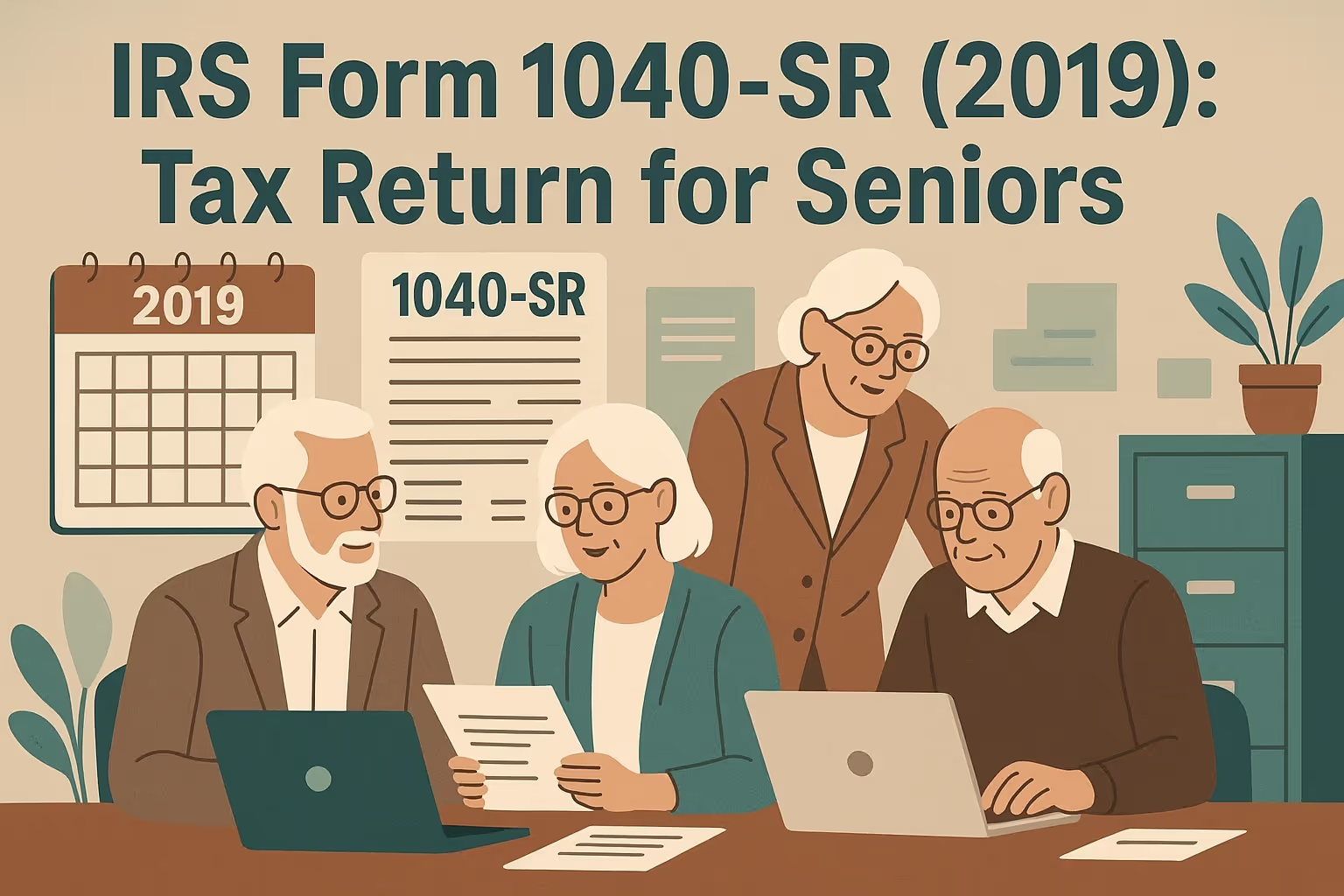IRS Form 1040-SR (2020): Tax Return for Seniors
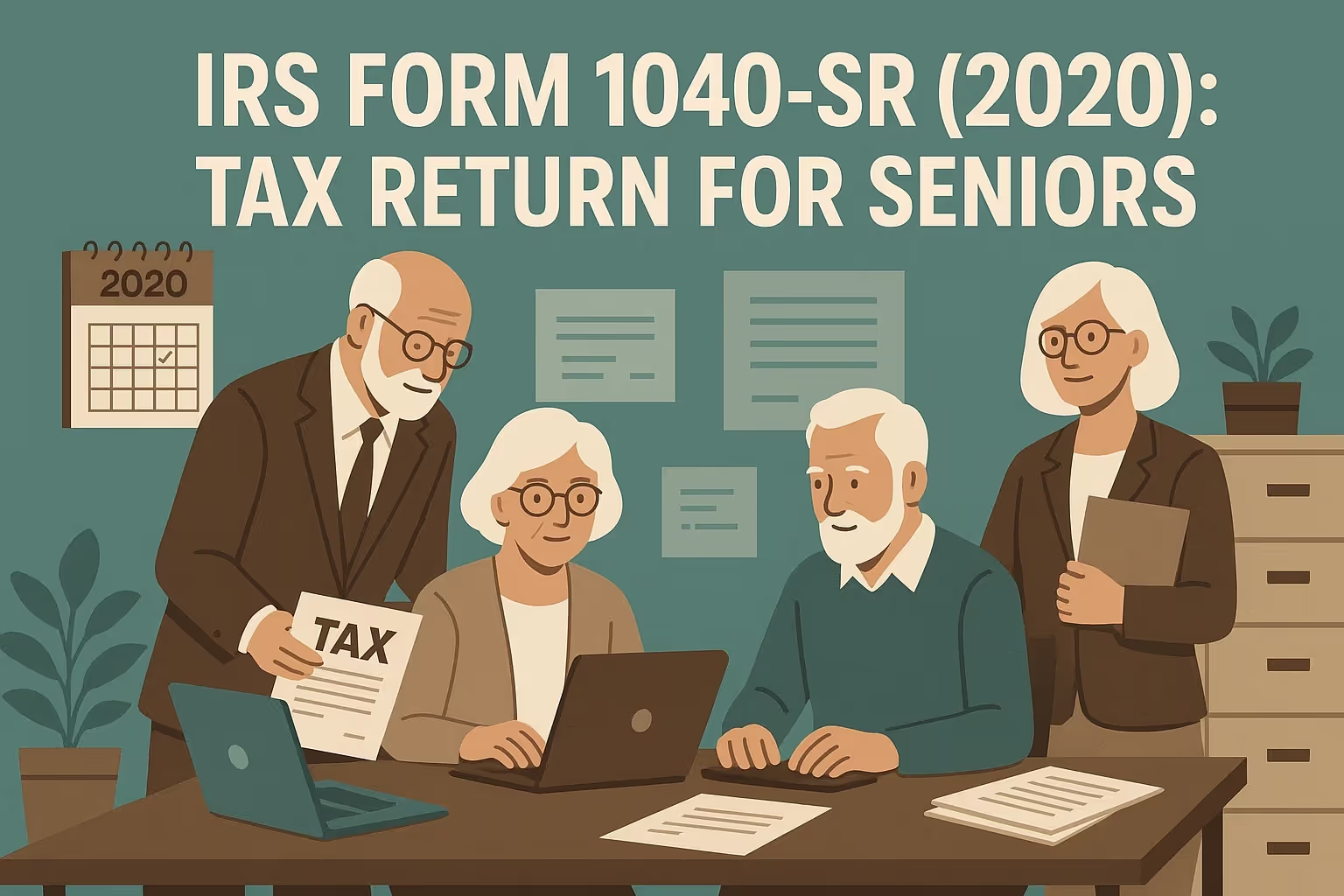
What IRS Form 1040-SR (2020) Is For
IRS Form 1040-SR (2020) is designed for seniors who prefer a straightforward method for filing their federal income tax return. It uses the same tax rules as Form 1040 but includes larger text and simplified formatting. It allows taxpayers to report income from wages, salaries, Social Security benefits, and investments.
Filers can determine their filing status—single filers, married filing jointly, or head of household—and apply the appropriate deduction amounts. The form clearly displays the standard deduction and includes the new senior deduction for taxpayers age 65 and older. It’s also suitable for those who receive Social Security income, have itemizing needs, or claim credits such as the child tax credit or earned income credit.
When You’d Use Form 1040-SR for 2020 (Late or Amended Filing)
You would use Form 1040-SR for the 2020 tax year if you need to file late or amend a previous return. This may apply if you received an IRS notice about unfiled returns, discovered incorrect income or withholding, or need to adjust deductions and credits.
Refund claims for 2020 expired on May 17, 2024. However, taxpayers who still owe a tax bill should file immediately to prevent penalties from increasing. Even without a refund, filing is essential to show compliance and to avoid interest from compounding. If you need assistance, a tax professional or trusted financial institution can help prepare the proper forms and ensure that all taxable income is reported accurately.
Key Rules Specific to the 2020 Tax Year
- The filing deadline was extended to May 17, 2021, due to COVID-19 relief.
- Required minimum distributions (RMDs) from retirement accounts were waived without penalty.
- Up to $10,200 of unemployment compensation was excluded from taxable income if your modified adjusted gross income was below $150,000.
- The standard deduction was:
- $12,400 for single filers
- $24,800 for married couples filing jointly
- $18,650 for head of household
- $12,400 for single filers
- Seniors age 65 or older could claim an additional $1,650 (single/HOH) or $1,300 per spouse (joint).
These deductions helped reduce taxable income for seniors and other individuals. Taxpayers should also review income thresholds to determine whether their Social Security benefits were taxable.
Browse more tax form instructions and filing guides in our Forms Hub.
Step-by-Step (High Level)
- Gather transcripts: Request IRS account and wage transcripts to confirm income, withholding, and prior filings.
- Complete the correct form: Use only the official IRS Form 1040-SR (2020) and instructions. Include any additional forms or schedules that are required.
- Attach schedules: Add Schedules 1, 2, and 3 or other applicable attachments for credits, income adjustments, or additional taxes.
- File properly: Mail your paper return to the IRS office for your state. E-filing is generally unavailable for tax years before 2018.
- Keep records: Maintain copies of all completed forms, receipts, and proof of filing for a minimum of three years.
If you need help preparing your return, a qualified tax professional can guide you through each step and determine the correct deductions and credits.
Learn more about federal tax filing through our IRS Form Help Center.
Common Mistakes and How to Avoid Them
- Using current-year forms instead of 2020 versions: Always download the official 2020 version of IRS Form 1040-SR to ensure accuracy for the correct tax year.
- Entering incorrect Social Security numbers: Verify numbers with the Social Security Administration before filing to prevent rejections.
- Forgetting both spouses’ signatures when filing jointly: Ensure that both individuals sign the return; unsigned forms may delay processing.
- Reporting Social Security benefits or taxable income incorrectly: Review IRS instructions to determine how much of your Social Security income is taxable.
- Failing to claim the correct additional standard deduction for seniors: Confirm your age and filing status to apply the correct senior deduction and reduce your federal income tax liability.
- Overlooking credits such as the child tax credit: Check eligibility for available credits to lower your total taxes owed.
- Misreporting income from wages, pensions, or investments: Compare reported amounts on W-2s and 1099s to your own records to avoid errors.
- Not attaching all required schedules and other forms: Include every supporting form that applies to your situation to avoid delays.
- Ignoring withholding or income errors reported by financial institutions: Request IRS wage and income transcripts to confirm correct amounts before you file.
- Submitting an incomplete or unsigned paper return: Review each line and box to confirm all sections are complete and properly signed.
Learn more about how to avoid business tax problems in our guide on How to File and Avoid Penalties.
What Happens After You File
After mailing your completed tax return, expect the IRS to process it within six to eight weeks. Late or amended filings can take longer. The IRS will send a notice if additional information is required or if any items were incorrectly reported.
If you owe a tax bill, pay taxes promptly or apply for an installment agreement using Form 9465. You may also apply online through the IRS website. Interest and penalties will continue to increase until your balance is paid in full.
You can check the progress of an amended return using the “Where’s My Amended Return?” tool available online at IRS.gov.
FAQs
Can I still file my 2020 Form 1040-SR and get a refund?
No, refund claims for 2020 expired on May 17, 2024. However, you should still file your federal income tax return if you owe taxes, since filing stops further penalties from accruing.
Will I face penalties for filing my 2020 return late?
Yes, the failure-to-file penalty is 5% of unpaid taxes per month (up to 25%), and the failure-to-pay penalty is 0.5% per month. Interest accrues daily until the tax bill is paid in full.
Do I need tax transcripts before filing a late return?
It is not required, but requesting transcripts helps verify wages, salaries, and withholding reported by businesses and financial institutions. This ensures the accuracy of your income and deductions.
Can I e-file a 2020 Form 1040-SR in 2024?
No, you probably cannot. Most online tax services only support the current and the two previous years. Mail your paper return to the correct IRS office for your state.
Should I also amend my state tax return?
Yes, if your federal return changes, your state return likely needs revision. Contact your state tax agency for forms and deadlines.
What if I can’t pay the taxes I owe?
File your return anyway to stop late-filing penalties, then apply for a payment plan. The IRS may grant temporary relief to taxpayers with financial hardship.
How long will it take to process my 2020 tax return, which was filed late?
Expect six to eight weeks for regular returns and up to 20 weeks for amended filings. Check your status online after three weeks.
For more resources on filing or understanding prior-year IRS forms, visit our guide on Individual Tax Forms.
















